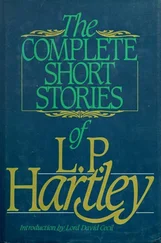‘A guilt complex isn’t an indiscriminate supply of moral sanctions. I think you may be overstretching yours.’ When he mentioned the name Eatherly, Traven shook his head.
Undeterred, Osborne pressed: ‘Are you sure you’re not making similar use of the image of Eniwetok – waiting for your Pentecostal wind?’
‘Believe me, Doctor, no,’ Traven replied firmly. ‘For me the hydrogen bomb was a symbol of absolute freedom. I feel it’s given me the right – the obligation, even – to do anything I want.’
‘That seems strange logic,’ Osborne commented. ‘Aren’t we at least responsible for our physical selves, if for nothing else?’
‘Not now, I think,’ Traven replied. ‘After all, in effect we are men raised from the dead.’
Often, however, he thought of Eatherly: the prototypal Pre-Third Man – dating the Pre-Third from August 6, 1945 – carrying a full load of cosmic guilt.
Shortly after Traven was strong enough to walk, he had to be rescued from the blocks for a second time. Osborne became less conciliatory.
‘Our work is almost complete,’ he said warningly. ‘You’ll die here, Traven. What are you looking for among those blocks?’
To himself, Traven murmured: the tomb of the unknown civilian, Homo hydrogenensis , Eniwetok Man. ‘Doctor,’ he said, ‘your laboratory is at the wrong end of this island.’
Tartly, Osborne replied: ‘I’m aware of that, Traven. There are rarer fish swimming in your head than in any submarine pen.’ On the day before they left, the young woman drove Traven over to the lakes where he had first arrived. As a final present, an ironic gesture unexpected from the elderly biologist, she had brought from Osborne the correct list of legends for the chromosome charts. They stopped by the derelict juke-box and she pasted them on to the selection panel.
They wandered among the supine wrecks of the Superfortresses. Traven lost sight of her, and for the next ten minutes searched in and out of the dunes. He found her standing in a small amphitheatre formed by the sloping mirrors of a solar energy device built by one of the visiting expeditions. She smiled to Traven as he stepped through the scaffolding. A dozen fragmented images of herself were reflected in the broken panes – in some she was sans head, in others multiples of her arms circled about her like the serpent limbs of a Hindu goddess. Confused, Traven turned and walked back to the jeep.
As they drove away he recovered himself. He described his glimpses of his wife and son. ‘Their faces are always calm,’ he said. ‘My son’s particularly, though really he was always laughing. The only time his face was grave was when he was being born – then he seemed millions of years old.’
The young woman nodded. ‘I hope you find them.’ As an afterthought she added: ‘Dr Osborne is going to tell the Navy that you’re here. Hide somewhere.’
Traven thanked her.
From the centre of the blocks he waved to her the following day when she flew away for the last time.
When the search party came for him Traven hid in the only logical place. Fortunately the search was perfunctory, and was called off after a few hours. The sailors had brought a supply of beer with them and the search soon turned into a drunken ramble.
On the walls of the recording towers Traven later found balloons of obscene dialogue chalked into the mouths of the shadowy figures, giving their postures the priapic gaiety of the dancers in cave drawings.
The climax of the party was the ignition of a store of gasoline in an underground tank near the airstrip. As he listened, first to the megaphones shouting his name, the echoes receding among the dunes like the forlorn calls of dying birds, then to the boom of the explosion and the laughter as the landing craft left, Traven felt a premonition that these were the last sounds he would hear.
He had hidden in one of the target basins, lying among the broken bodies of the plastic models. In the hot sunlight their deformed faces gaped at him sightlessly from the tangle of limbs, their blurred smiles like those of the soundlessly laughing dead.
Their faces filled his mind as he climbed over the bodies and returned to his bunker. As he walked towards the blocks he saw the figures of his wife and son standing in his path. They were less than ten yards from him, their white faces watching him with a look of almost overwhelming expectancy. Never had Traven seen them so close to the blocks. His wife’s pale features seemed illuminated from within, her lips parted as if in greeting, one hand raised to take his own. His son’s face, with its curiously fixed expression, regarded him with the same enigmatic smile of the child in the photograph.
‘Judith! David!’ Startled, Traven ran forwards to them. Then, in a sudden movement of light, their clothes turned into shrouds, and he saw the wounds that disfigured their necks and chests. Appalled, he cried out. As they vanished, he ran off into the safety of the blocks.
This time he found himself, as Osborne had predicted, unable to leave the blocks.
Somewhere in the centre of the maze, he sat with his back against one of the concrete flanks, his eyes raised to the sun. Around him the lines of cubes formed the horizon of his world. At times they would appear to advance towards him, looming over him like cliffs, the intervals between them narrowing so that they were little more than an arm’s length apart, a labyrinth of corridors running between them. They then would recede from him, separating from each other like points in an expanding universe, until the nearest line formed an intermittent palisade along the horizon.
Time had become quantal. For hours it would be noon, the shadows contained within the blocks, the heat reflected off the concrete floor. Abruptly, he would find that it was early afternoon or evening, the shadows everywhere like pointing fingers.
‘Goodbye, Eniwetok,’ he murmured.
Somewhere there was a flicker of light, as if one of the blocks, like a counter on an abacus, had been plucked away.
Goodbye, Los Alamos. Again, a block seemed to vanish. The corridors around him remained intact, but somewhere in his mind had appeared a small interval of neutral space.
Goodbye, Hiroshima.
Goodbye, Alamagordo.
‘Goodbye, Moscow, London, Paris, New York …’
Shuttles flickered, a ripple of lost integers. He stopped, realizing the futility of this megathlon farewell. Such a leave-taking required him to fix his signature upon every one of the particles in the universe.
The blocks now occupied positions on an endlessly revolving circus wheel. They carried him upwards into the sky, from where he could see the whole island and the sea, and then down again through the opaque disc of the concrete floor. From here he looked up at the under-surface of the concrete cap, an inverted landscape of rectilinear hollows, the dome-shaped mounds of the lake-system, the thousands of empty cubic pits of the blocks.
Near the end, he found to his disappointment that this ultimate rejection gained him nothing.
In the interval of lucidity, he looked down at his emaciated arms and legs, decorated with a lace-work of ulcers. To his right was a trail of disturbed dust, the wavering marks of slack heels.
To his left lay a long corridor between the blocks, joining an oblique series a hundred yards away. Among these, where a narrow interval revealed the open space beyond, was a crescent-shaped shadow, poised in the air above the ground.
Читать дальше












